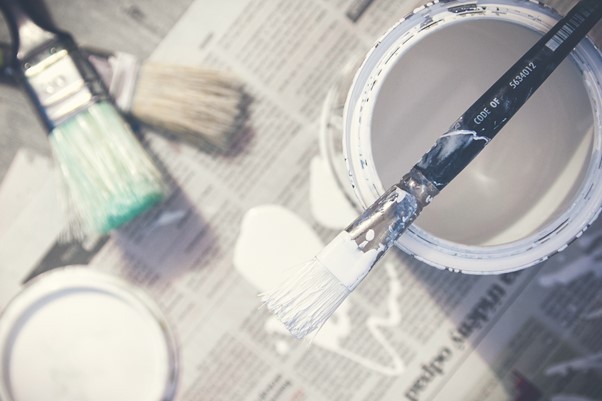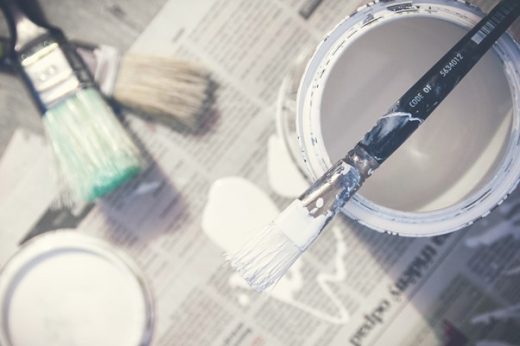Why it’s crucial to prime before painting steel guide, Online property paint advice, Primer surface coat
Why It’s Crucial to Prime Before Painting Steel
20 Jan 2022
Homeowners need to put different things into consideration when they want to paint their homes. For instance, they need to think about their painting strategy, the colors they want, their planning, the paint quality, and the equipment to use for the job.
Most homeowners will often come up with an elaborative list with all things but a bigger percentage of them forget about a primer. They should note that a primer is important when it comes to the lifespan and the quality of steel painting.
Primers offer a solution that is needed on the surface before one starts painting. It is important especially when it comes to properly protect walls or steel, making sure that the paint adheres well to the surface, and improving the lifespan of the paint.
A primer is known for providing a smooth layer for the paint to adhere to or “stick-on” well. It offers a better surface compared to painting without first applying it.
Types of Primers
There are different types of primers, with each one of them used for different types of surfaces and functions. When working with steel, you might have vent holes that you need to cover before painting.
To cover them, you can use vent hole plugs and then file the excessive metal using an abrasive material or hand file.
However, the steel will still not be ready for painting without the right primer. You need to select the right type of primer to ensure that you create a smooth surface on the steel. Some common types of primers include;
Stain Blocking Primer
You will find multiple stain-blocking primers in the market, with each one of them serving different purposes. For instance, these primers are used when keeping smoke and water from damaging the finishing paint.
They are also used when painting on top of grease, marker, or crayon, and when you need to make an almost impossible color change such as when your original paint is dark but you need a light color change.
Masonry Primer
Masonry primers are used when painting masonry surfaces. Looking at most of these surfaces, you will find that they have high levels of pH, something that causes adhesion when the paint is applied on the surfaces without a primer.
However, with the right masonry primer, you will apply paint on any masonry surfaces without having to worry about the pH levels of the surfaces. In addition, the primer will make sure that you do not face any adhesion challenges.
Bonding Primer
Some steel surfaces are quite difficult to paint especially depending on the kind of job that the steel materials do. For instance, it gets difficult when painting metal sliding on industrial buildings, glazed blocks, ceramic tile, vinyl shutters, and even plastic.
However, a bonding primer is known to do the best job when it comes to these kinds of jobs. You need to make sure that you have chosen the right bonding primer depending on the job that the materials you want to paint will be doing.
Wood Primer
Apart from painting steel, you also need to think about a primer when applying paint on wooden surfaces. It is important to note that bare wood offers one of the most challenging surfaces for the paint to adhere to.
Some people still use oil primer – this has been used for many years and is considered old-fashioned – something that forces them to wait for at least twenty-four hours for the primer to dry before they can apply the paint.
This has led to the development of a wide range of fast-drying wood primers used on wooden surfaces. This helps the paint to adhere well and last for a long time.
Why Are Primers Important?
One of the most important functions of primers is to ensure that painters have a strong surface for the bonding between their topcoat and undercoat.
You can use primers on steel and a wide range of other surfaces such as steel with rubbed-down paintwork, drywall, masonry, plaster, and timber surfaces.
With the right primer, you get a sticky surface that easily binds with the paint applied on top of it.
When it comes to wood, primers cover knots and grain, ensure that the previously painted color does not bleed through, hide all joints, and ensure that you do not have to spend money getting any finishing coats.
In some instances, you might be painting materials that are not water-resistant and might be exposed to other elements that might affect their durability. In such cases, primers serve as a protector or a seal that prevents the formation of mold.
Why It’s Crucial to Prime Before Painting Steel Summary
In conclusion, you might be painting steel with dirty surfaces. Depending on the processes of construction and the steps taken when preparing the steel, you might not be able to clean it.
Using a primer allows you to create a smooth surface over the dirt that is easy to paint. This would be very challenging without a primer.
Comments on this guide to why it’s crucial to prime before painting steel article are welcome.
Building Articles
Residential Architecture
Nursery school building designs
Kai Tak, Polzeath, Cornwall, south west England, UK
Design: Cassell Tarring

photo : Daniel Fisher
Kai Tak House
Steel
Building Steel
5 Benefits of Cold-Rolled Steel
Why You Should Build With Steel
Top uses for cold rolled steel
Comments / photos for the Why it’s crucial to prime before painting steel advice page welcome






